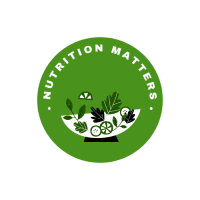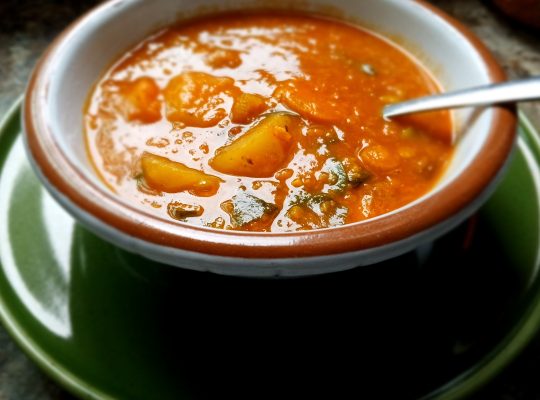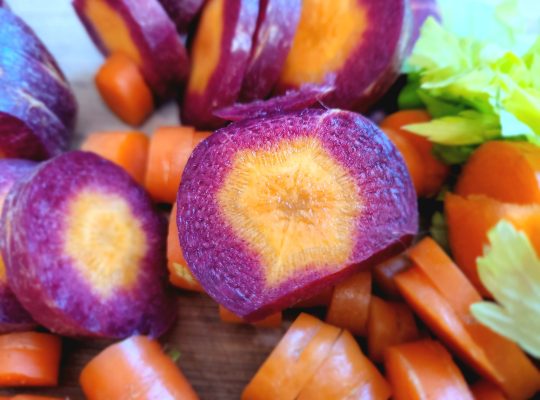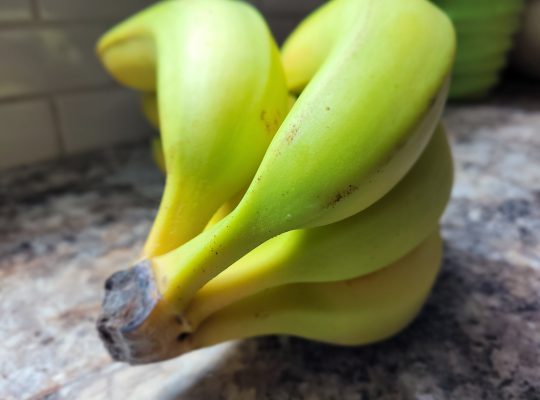There was a book I used to flip through often when I was in high school. It was written by Jean Valnet, MD, and titled something along the lines of ‘Heal yourself with legumes, fruits and vegetables’. It was quite hard not to go get yourself a plateful of colourful, fresh fruit or veggies after reading how healthy they were. He referred to cabbage as ‘the medicine of the poor’ because of its many amazing properties, internally and externally and for every fruit, veggie, herb, and legume, he would have an extensive list of qualities.
It changed the way I looked at them. Also, it planted a seed that kept on growing, unbeknownst to me, until it reached this stage. And last but not least, it added intention to the way I chose foods. I like that.
Early learning means better health
I’ve often said that one of the first things kids learn in school, if not at home, should be about how their bodies work, what various foods and their nutrients help our bodies thrive and how processed foods affect health, especially when eaten extensively. It may appear nerdy on the surface, but I do believe that knowledge open doors, and this facet of life is no exception.
When my boys were little, we had this mealtime game when they would ask where the foods on their plate came from and why we ate them. It was a game, sure, but it made eating fun and there was no rejection of foods just because. Finding a reason transforms our actions, doesn’t it?
If we keep at it, we can shift the way we choose foods that are better for us. By the same token, if a food is deleterious to our health, whether in the short or long run, that knowledge can stop us from consuming it, even if the process takes a while.
It’s always the why that starts a conversation, or a search for answers. If we pursue the why all the way to where knowledge satisfies, our minds expand and grow.
An application of the why principle
Let’s consider broccoli for example. It’s part of the Cruciferous family and truly a miraculous food, as all its family members are.
I grew up eating most of them minus the broccoli, which I was very curious to try given the extensive list of health properties from Dr. Valnet’s book. I finally tasted it as an adult and felt the slight bitter taste, but it did not bother me. I found it fascinating that so many kids books and movies were and still are portraying broccoli as a veggie that’s hard to stomach. What a disservice to health, no? (By the way, bitter foods contain compounds that help with liver detoxification. Dandelion greens in the spring, for example, but arugula too, and Brussels sprouts.)
All the Cruciferous veggies have a compound called sulforaphane which is formed when you either chew or chop them. If you chop them, let them sit a bit so the sulforaphane develops properly.
If you’re already a pro at cooking with these veggies and you’d like to take it to the next level, consider sprouting broccoli seeds. It’s easy and a tablespoon or two will give you a good crop that will last you a few days (you can add them to soups, sandwiches, salads and wraps).
And there is a next level
Sulforaphane is increased significantly in sprouts compared to mature broccoli (up to 100 times more), but make sure to eat them raw because cooking would annihilate this powerful compound and others too.
As for what sulforaphane can do for you, here’s a bit of a laundry list: anti-inflammatory, anti-cancer, detoxifying, boosts brain function and reduces the risk of dementia and Alzheimer’s disease, improves blood glucose and lipid profile, helps lower blood pressure, inhibits the growth of certain pathogenic bacteria and fungi. Remarkable, no?
And speaking of cooking, a 2012 study showed that broccoli retained most of its active compounds when it was microwaved rather than boiled. I usually steam broccoli using a stainless-steel steaming rack.
If you want to try sprouting, all you need is: sprouts (I usually buy mine at Mumm’s Sprouting Seeds | Delicious Organic Non-GMO Seeds – no affiliation, I just like their products), a wide-mouth jar and sprouting lid, and a way to position the jar at 45 degrees so the water drains and the seeds keep appropriately moist until they are ready for consumption. You can find detailed instruction either on the website above or you can go here (again, no affiliation).
Give it a try and let me know how it goes.







